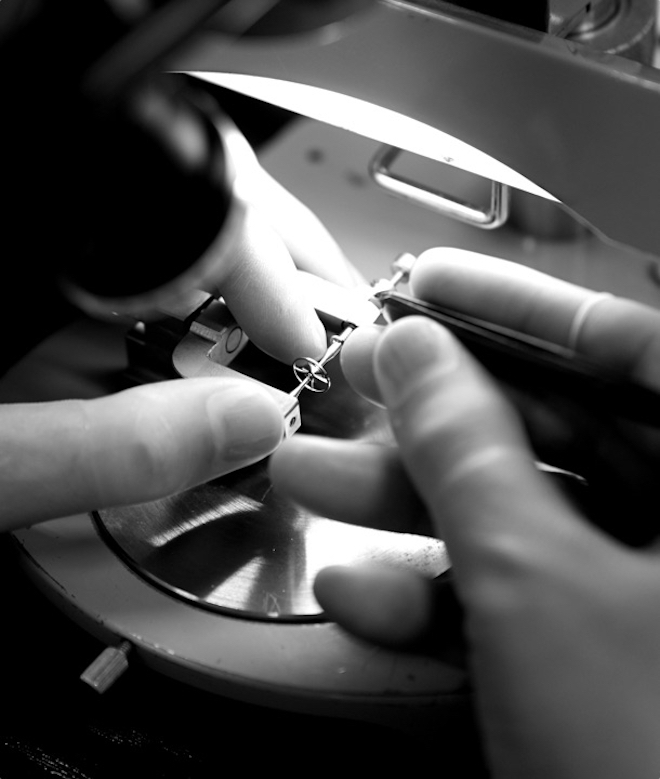
Ikukiyo Komatsu, Modern Master Craftsman, Seiko
Mr. Ikukiyo Komatsu is a master watchmaker from Shinshu studio in Shiojiri Japan. Over the course of his career, he has rendered time in steel and brass, breathing to life an intricate dance of tiny pallets, pinions and pawls in masterpieces of timeless elegance.
With over 40 years of experience under his belt, Komatsu has won numerous awards including a gold medal in the International Technical Skill Olympics (watch repairing section) and was officially recognised as a ‘Modern Master Craftsman’ by the Japanese government in 2014. Today, he trains the next generation of Japanese watchmakers, World of Watches and LUXUO were on hand to interview the effable artisan from Japan on what makes him tick.

Ikukiyo Komatsu, Seiko Master Craftsman on training next generation watchmakers and the future of Japanese fine watchmaking
Having received no formal education in watchmaking or watch repair, Komatsu simply acquired the skill over time during his formative years watching his father repair and assemble watches every single day.

Jonathan: Komatsu-san, What gives you the most satisfaction working with Seiko?
Komatsu: The honour of teaching young freshman apprentices to be professional watchmakers.
Is it hard to find young people in Japan wanting to be watchmakers?
Every year, Seiko hires 300 new staff, among them, some of them are willing to join the watchmaking team and some eventually reach the level of craftsmen.

When you joined Seiko in 1982, this was when Japan was disrupting the Swiss mechanical watch industry with quartz watches, did you imagine that mechanical watches would make a come back?
When I joined the company, I was assigned to the mechanical watch section, so I never believed the genre would disappear. [Laughs] Mechanical movements have their advantages which would allow them to remain even in the future. Both can co-exist even if some like to play up the drama of one killing the other.

Kintsugi, also known as Kintsukuroi, is the Japanese art of repairing broken pottery by mending the areas of breakage with gold lacquer. A practice stemming from Shinto belief that even inanimate objects have soul, a practice which permeates Japanese fine watchmaking
Meanwhile, over in Switzerland, the watchmaking industry was really sure that the age of the mechanical watch was over with many watch factories closing, some destroying tools and plans even like Zenith, it sounds like in Japan, Seiko was sure that there was going to be a future in mechanical watchmaking. What is it that Japanese watchmakers saw?
[Laughs] Quartz can be very accurate but you have to change the battery. Mechanical watches require no such intervention but it needs something else, the human touch and movement to operate, it feels like it has a heart and we literally breathe life into these watches. There is more soul in a mechanical watch but this perspective is not held by everyone.

The Japanese are obsessive with fine crafts right down to the brand motif on the watch buckle
Japan is famous for Sebiro suits and whiskey, your craftsmen are known for taking European techniques and perfecting them, do you admire a Swiss technique that you would like to interpret for Japanese fine watchmaking?
The finishing of the hands and refinement of the case are something which can be defined as a Japanese speciality. That said, the Swiss are known for ultra-thin calibres while we Japanese prefer robust efficiency so our movements are a bit thicker, so in the future, it would be good if we can develop our own vision for a thin movement.

What does it take to be recognised as a ‘Modern Master Craftsmen” by the Japanese government? Is it by number of years or demonstration of skills?
The skills, the dedication and the willingness to transfer these competencies to the next generation.

Zaratsu finishing – first used in the making of Japanese swords or Samurai Katanas
Have you ever considered taking up hobbies that might make you a better watchmaker, for instance, taking up sword-making since Zaratsu finishing is often mentioned as a Katana making technique?
[Laughs] Ok, maybe not swords but the Japanese tea ceremony. It’s not so much a skill learned but a spirit embodied because it is a tradition which not just involves many fine tools but also the embracing of harmony, respect, purity and tranquillity. I did this for three years, because the positive values are a symbol that the tea and the drinking of it is not just the focus but the whole process of the ceremony and what it conveys to the guests. Like watches, it is an exchange between both maker and consumer. There’s a similarity with watch assembly.

As a master craftsman, what do you feel is your ultimate achievement or ultimate dream?
I want my successor to join the skill Olympics and win a gold medal. It is the wish of every master to see their students surpass them.
Grand Seiko, Seiko Presage and the new Seiko 5 collection are available at the newly opened brand boutique: 391 Orchard Road #B1-36 Takashimaya Shopping Centre, Ngee Ann City, Singapore 238872
Opening hours: Mon to Sun 10:00am – 9:30pm
The post Ikukiyo Komatsu, Seiko Master Craftsman on the future of Japanese fine watchmaking appeared first on LUXUO.
